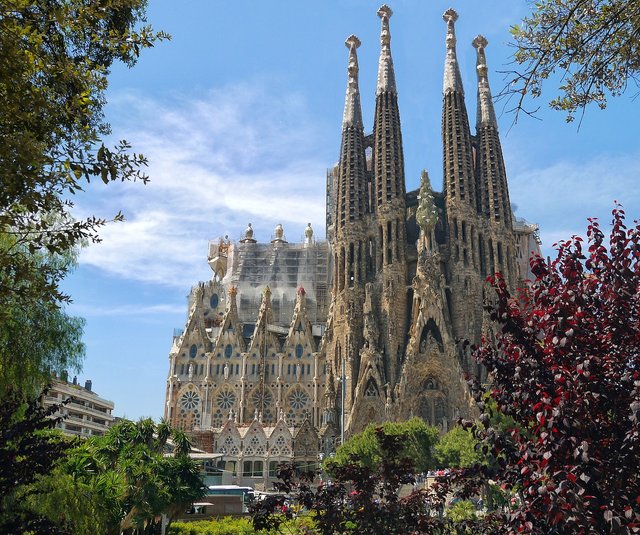The Sagrada family is considered Barcelona's most famous landmark and was included in the UNESCO World Heritage List in 2005. The life's work of Antoni Gaudi shapes the city and attracts countless tourists.

Name and History of the Basilica
The full name of the Basilica is translated in German as the Church of Reconciliation of the Holy Family.
Construction began in 1882, but has not yet been completed. The building is expected to be free of fences and craftsmen in 2026. But already in 2010 it was consecrated by the Pope and thus made a basilica.
The architect Antoni Gaudi is still considered to be the most important stylistic influence, who created the designs and had the building started in the New Catalan style. Despite ongoing construction work on the Sagrada Familia Cathedral, this style is still preserved today and will be continued.
The idea for the construction of this church in honour of the Holy Family, the Sagrada de familia, came from Josep Mari Bocabella, who was so impressed by the great Italian churches after his trip to Italy that he set himself and his spiritual association the goal of building a church for his city Barcelona, which is financed only by donations.
Antoni Gaudi was only commissioned after a few quarrels between clients and architects, at which time the foundation stone had already been laid.
Until 1926 Gaudi worked for 43 years at the Sagrada Barcelona and realized his idea of the three facades, which all contain three different spiritual messages and are equally symbolic.
The facades of the Sagrada Familia
The three facades of the Sagrada Familia depict the birth, the Passion and the Blessedness of Christ in silent pictures, which nevertheless speak to the viewer and tell him the stories that are told in them.
First of all, the facade of the Nativity of Christ was completed, with three large portals and four bell towers. It contains mainly well-known biblical scenes, such as the visit of the Three Magi. There are also symbols of eastern culture, the turtle or the chameleon refer to the notions of constancy and the contrasting constant change of nature.
The second facade shows Christ's suffering and was not the first to be completed on purpose, because Gaudi believes that one would have distanced oneself from his building. The predominant style of art in this facade is inspired by Expressionism and shows columns in the form of bones.
The most impressive facade, however, is the Blessed Mother's facade, which is still not finished. According to Gaudi's plans, the Four Last Steps of Man were to be shown there: Death, the Last Judgement, hell and last of all happiness.